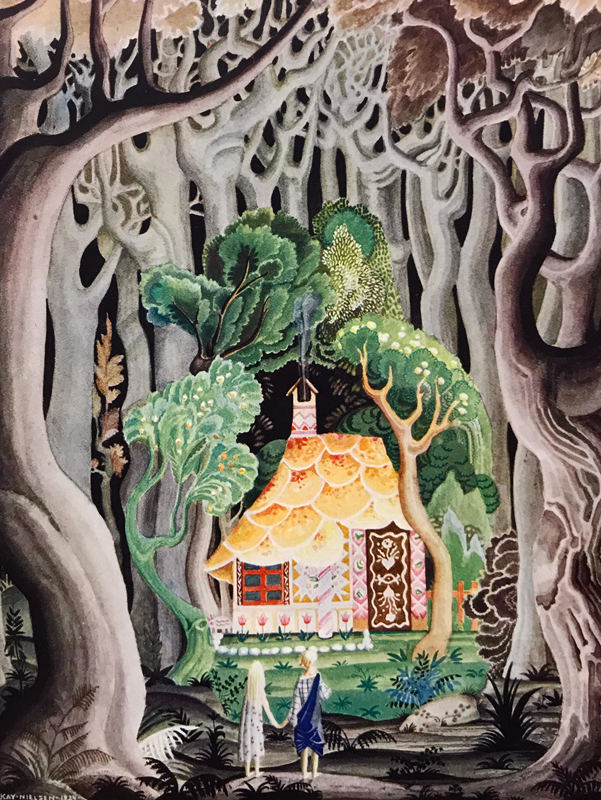
Listen, children, I’m going to tell you how the story really goes:
Once upon a time, there was a woman named Heiltsuk and a man named Gitxsan and they lived together in the forest. Heiltsuk was an artist, a gift-giver and a boat-maker and, where the forest met the sea, she made large boats that could sail for many days and nights out on open water. In the summer, she would harvest food. In the winter, she would dance and tell stories to Gitxsan. Gitxsan, himself, preferred the mighty river that ran through the forest to the open waters of the sea, he was drawn to the animals and plants of the river valley—the frog, the eagle, the wolf, and the fireweed, all of which he would carve onto long story-telling poles. He felt most at home fishing when the river mist hovered over the water.
Heiltsuk and Gitxsan lived together in the forest for a very long time. And the forest and river and sea and trees and fishes and frogs and eagles and wolves and fireweed lived alongside of them. And when the time came for Heiltsuk and Gitxsan to die, another Heiltsuk and Gitxsan had already been born and raised up to continue and so the generations continued as the sun rose and set, the moon waxed and waned, and the seasons came and went.
Then, one day, a pale old man wandered into their forest. He claimed to have marked his passage with breadcrumbs but the ravens and coyotes ate them up and now he was lost and cold and starving. Taking pity on him, Gitxsan built him a house and Heiltsuk gave him many gifts. While they tended to him, he repeatedly claimed that he was actually the true owner of the forest but Heiltsuk and Gitxsan had been there for many generations and had never seen or heard of him before. They took his words to be the fevered ravings of a sick man who did not even know how to find his path through the forest and who surely would have died if they had not cared for him.
The pale old man recovered and, unbeknownst to Heiltsuk and Gitxsan, was a powerful wizard whose powers grew as he became healthier. But his magic was blood magic, sacrifice magic, and death magic, and a sickness began to emanate from the house where he lived. The trees and fireweed around the house withered. The frogs developed Chytridiomycosis. The river began to run black and great wounded holes appeared in the earth. Eagles nesting in the area discovered that the shells of their eggs became to thin and either broke during incubation or failed to hatch. The wolves retreated further into the forest so as to avoid being near to him.
But the old man lived by stealing the life force of others and so he began to make treats and hang them on the outside of his house in order to try and entice other plants or animals to come close enough for him to grab them and bake them in his oven. But since the plants and animals were fleeing from him, he turned his attention to Heiltsuk and Gitxsan.
“Little girl! Little boy! Come taste my treat, treat, treaties!” he said. “So many delicious treaties—vintage treaties one through seven, treaties I learned to make from those who came before me from across the great sea, and I even have modern treat, treat, treaties!”
Heiltsuk and Gitxsan laughed to one another. Who was this pale old man who spoke to adults as if they were children? Who offered treats that even the mice and crows would not touch? And so they ignored him and went about their work.
So the pale old man looked for a truly incredible treat that might draw the attention of Heiltsuk and Gitxsan and he decided to present them with an ice cream that would stay cool in the summer. No matter how long you held it in your hand it would not melt or make your fingers sticky. Because the ice cream would not drip, he called it UNDRIP. And, truth be told, this did capture the attention of Heiltsuk and Gitxsan but when he tried to use it to lure them into his hut, they laughed and went back out into the forest.
So the pale old man though long and hard and, after several years, he baked a spread of 94 pies, each one sweeter than the next. He named this spread of pies “Truth and Reconciliation” because, he said, he was ready to listen to the ways in which he may be harming the forest and he was ready to turn away from blood magic in order to live in proper relationships with others. Hearing these words, and thinking of all the ways in which the forest and her creatures, the water and the earth, had suffered since the pale old man had become healthy, Heiltsuk and Gitxsan were relieved and agreed to go and see him. They were saddened by how much had died by the house they built for him many years ago—the forest gone for miles around, the plants dead, the animals retreated, the earth scarred, and nothing but stale and foul-smelling old treats hanging on the walls. However, once they entered the house the delicious odor of the pies overhwhelmed them and Gitxsan went to the oven to smell them. Seeing his opportunity, the pale old man came up behind Gitxsan and, with all his might, pushed Gitxsan into the oven where he roasted to death. The pale old man then raped Heiltsuk before also throwing her into the oven to die. In this way, he tried to make true his claim that the forest belonged to him. He then wrote letters to others like him and told them to come to him but, instead of using bread crumbs to mark their trail, he told them to lay down two ribbons of steel so that there would always be a fast and easy way for his people to travel from sea to shining sea.
This, then, is how the story really goes. There is one final thing worth noting. Because this story challenges the claims of the pale old man (who still lives in the house Gitxsan built for him even though the forest itself is now almost completely gone), it is a dangerous story. Because it is a story that is upsetting to the people of the pale old man who followed in his footsteps, it is a story that is not permitted to remain as it is. And so the story has been changed. Instead of learning of Heiltsuk and Gitxsan, the people of the pale old man tell the story of Hansel and Gretel (names they find much easier to pronounce) and instead of being at home in the forest, Hansel and Gretel are actually the ones who wander into the forest and become lost. There, instead of finding support and aid (like the pale old man found), they encounter a savage, uncivilized, cannibalistic old witch (a woman, of course, for the pale old man hated women long before he ever met Heiltsuk and Gitxsan) who tries to lure the children to their doom by hanging candies and other treat, treat, treaties, on the walls of her home. However, as we are taught, even small pale children are smarter than woodland savages and so they manage to outwit this witch and, in order to save their own lives, they push her into her own oven where she dies. Thus, Heiltsuk and Gitxsan and forgotten, their rape and murder celebrated, and the forest emptied of all but the pale people who come to chop her down.
